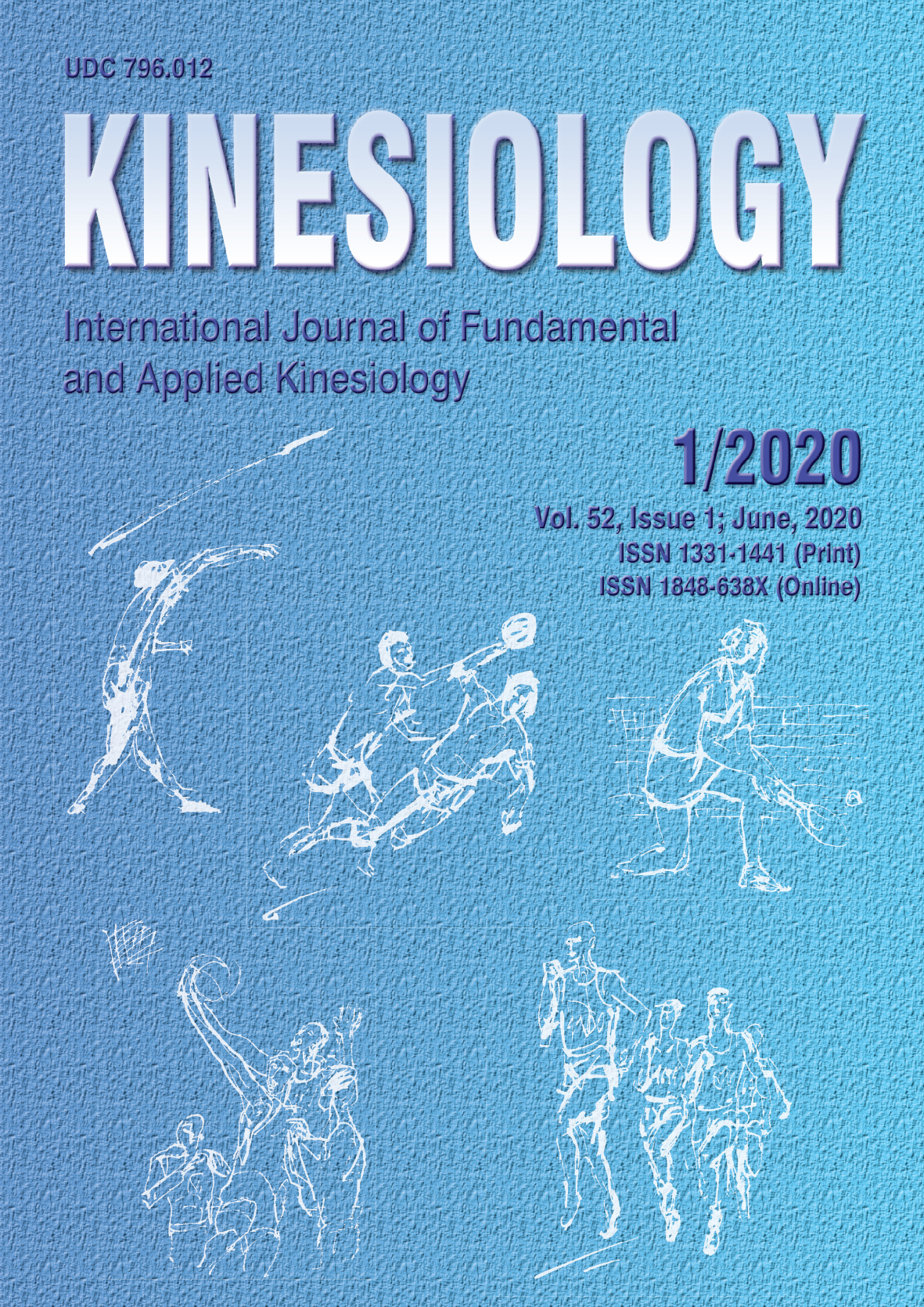ANALYSIS OF DISCRIMINATORY GAME VARIABLES BETWEEN WINNERS AND LOSERS IN WOMEN'S HANDBALL WORLD CHAMPIONSHIPS FROM 2007 TO 2017
Discriminatory variables in women’s handball championships
Abstract
The aim of this study was to identify game variables that discriminate winning from losing teams and to understand how these variables contribute to victory by observing differences of goals in matches of women's handball world championships. The sample comprised 471 games between 2007 to 2017. The games were grouped into three clusters (balanced games - difference of 1 to 8 goals; unbalanced games - difference of 9 to 20 goals; very unbalanced games - difference of > 20 goals). In comparisons of means, the performance of winning teams is significantly higher (most variables), or lower in the case of number of technical fouls (p < .05). In balanced games, there is a greater contribuition of defensive variables (stollen balls, blocked throws and goalkeeper efficiency) in relation to attack variables (attack efficiency and throw efficiency). For victory, the number of technical fouls reduces to a lesser extent the chances of winning. Games with unbalanced and very unbalanced scores seem to follow a same tendency. We conclude that the decisive variables for victory showed a greater weight with a special emphasis on stolen balls followed by offensive variables (throw efficiency, attack efficiency and technical fouls) in balanced games.
Downloads
Published
How to Cite
Issue
Section
License
Copyright (c) 2020 Kinesiology

This work is licensed under a Creative Commons Attribution-NonCommercial 4.0 International License.
At Faculty of Kinesiology we recognize that access to quality research is vital to the scientific community and beyond. Kinesiology is non-profit journal and all costs of publishing and peer review process are covered by the publisher itself or other funding sources like Ministry of Science and Education of the Republic of Croatia. Full text papers are also available free of charge at http://hrcak.srce.hr/kineziologija. There are no restrictions on self archiving of any form of paper (preprint, postprint and publisher's version).
Articles are distributed under the terms of the CC BY - NC 4.0
Kinesiology does not charge any fees to authors to submit or publish articles in our journal.


